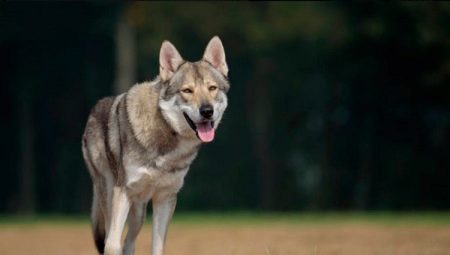Throughout the history of mankind, attempts to create a hybrid of a wolf and a dog have occurred repeatedly. It would seem that these animals have much in common, and the result should be crowned with success. In fact, getting offspring that meets the expectations of breeders was not easy. Scientists recognized only two breeds obtained from the cross of these two animals, and one of them was called the Sarlos Wolf Dog. It will be discussed in this article.
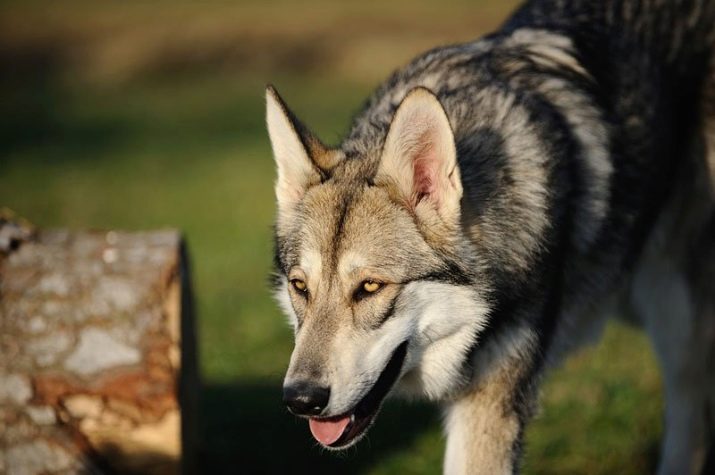
Origin of breed
In 1925, the Dutch scientist L. Sarlos was able to get good offspring from a female wolf and dog. The father of the kids was a representative of the German Shepherd breed. Despite the fact that their mother grew up among people all their life, the genes of the puppies took their toll: they were aggressive and non-contact, could not adapt to life in captivity.


The breeder did not give up and continued to conduct experiments, each time selecting the strongest and most viable puppies from litters. After the death of Sarlos, his family continued breeding, as a result of which it was possible to get a dog breed, which was officially recognized by experts. In 1962, she entered the register of the International Cynological Association. Today, the Sarlos Wolf Dog population has increased, but the breed is still considered rare.
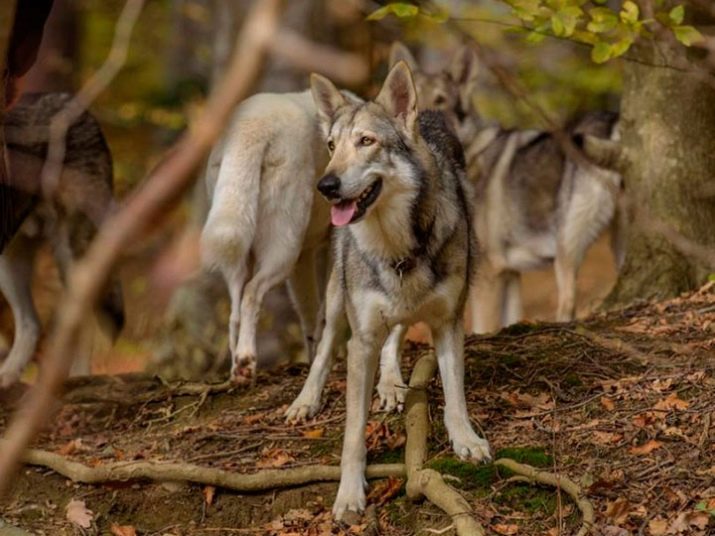
In addition, such pets are not suitable for everyone, since they have certain characteristics, which we will talk about later.
Description
At the end of the last century, the Sarlos dog breed standard was adopted. Her growth is quite large, at the withers it reaches 70 centimeters for males, and 65 cm for females, but exceeding standard indicators is possible.The weight of animals varies around 40 kg (in females - 32-36, in males - 36-48). The muzzle is elongated. The dog carries the tail straight or slightly curved, in the form of a saber.
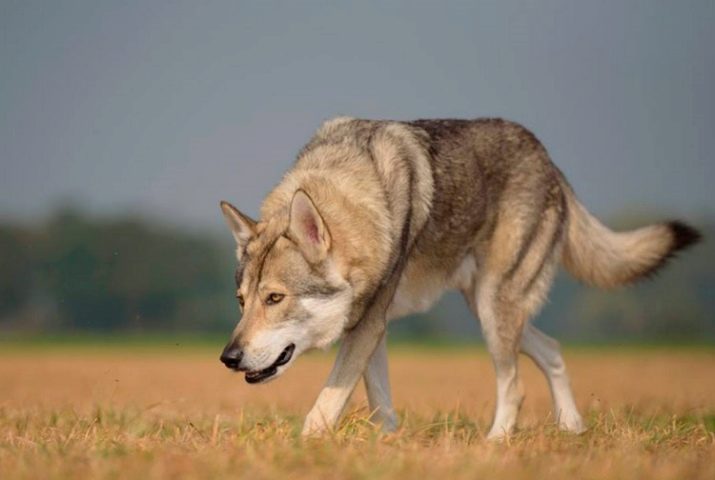
Representatives of this unusual breed are somewhat different from their counterparts. Sarlos are very attentive, and literally scan the eyes of strangers falling into their field of vision. Sometimes, being among other dogs, they want to join their flock. Freedom-loving, proud and stubborn, they are not very willing to carry out commands, but in general the breed lends itself to training.

The dog's face resembles a wolf due to the specific shape and position of the eyes, which are yellow in color and almond-shaped. Its main feature is a strip that stretches towards the cheekbones. The case looks somewhat elongated, from the bottom it is lean. A strong neck gently passes into the back, on its back side it is fashionable to notice the likeness of a collar, which is especially pronounced in the cold season.

All four limbs have well-developed muscles, which allows the dog to easily and rapidly move even in the snow - in this, its gait is compared to a wolf. She can trot for a long time and tirelessly, overcoming long distances without stopping to rest.
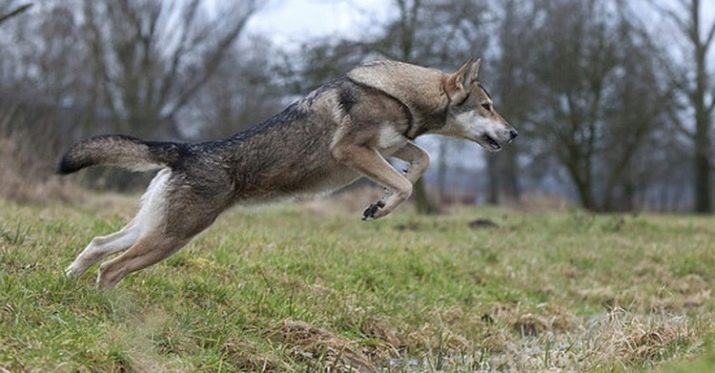
In summer, Sarlos dog fur has a different structure. So, in the warm season, the outer hair prevails in it, and in the cold season it is complemented by a warm undercoat. In general, the color of dogs of this breed is almost the same, like a wolf. However, it has shades from light to dark, sometimes the color scheme includes brown and cream color. Accordingly, the color will also vary with the stroke of the eyes - from black to brown.
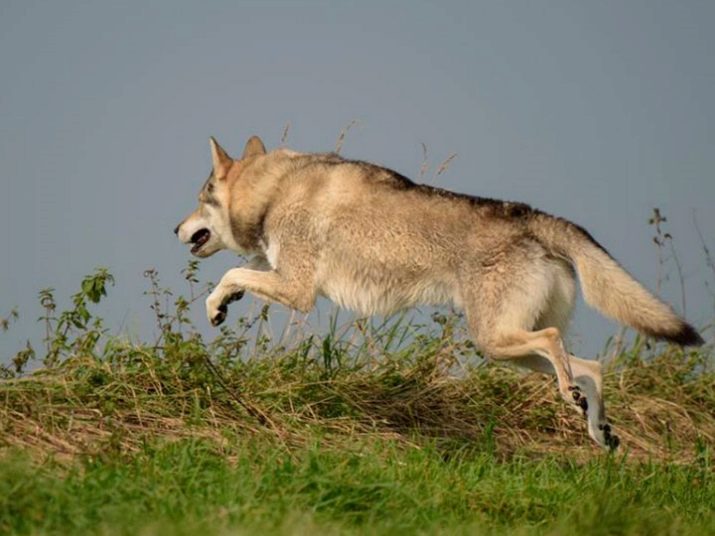
Destination
This rare semi-wild breed was widespread only at home, in the Netherlands. Why is there so few people in our country who decide to have a wolf dog at home? Perhaps the reason lies in the banal fear - suddenly the instincts of the ancestors will wake up from the animal, and it will do something harmless.
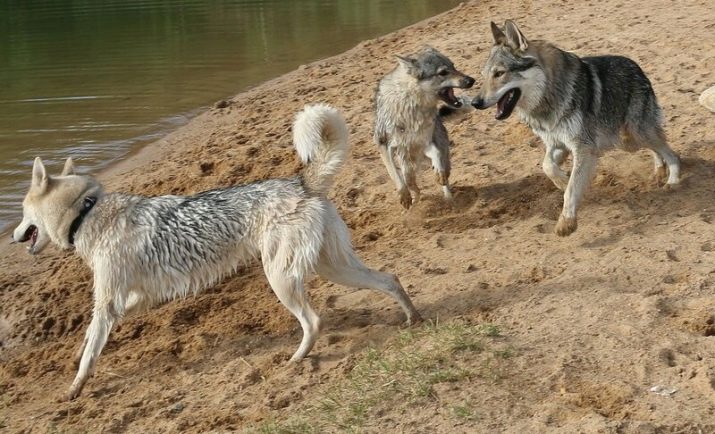
However, gradually interest in these dogs begins to increase.
At home, the Sarlos Wolf Dog is popular and love. She gained authority both as a guide and as a rescuer. Her sensitivity and ability to feel a person’s condition make her a reliable four-legged friend. She is not afraid to be on an unfamiliar street with her, because thanks to her excellent orientation on the terrain, she will take her master out of any place and help him get home.
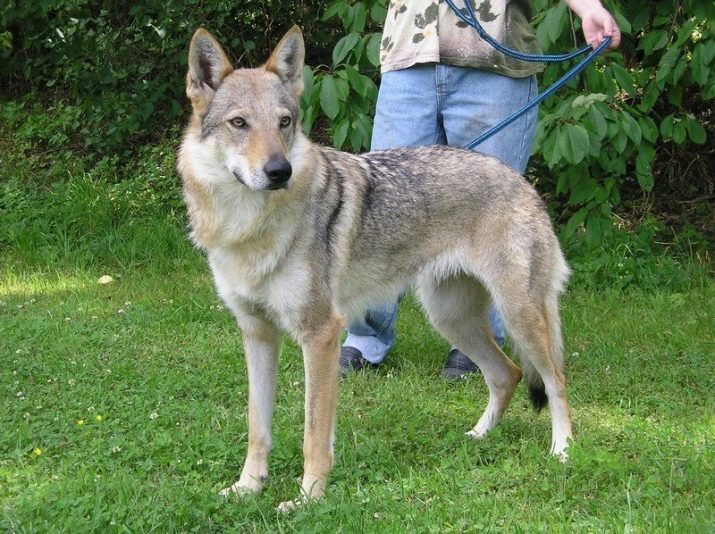
Protection is the destination of many dogs, and the Sarlos wolf was no exception. She well guards the territories entrusted to her, and is also able to protect her owner from encroachments of strangers. But no matter how clever and versatile this dog is, her wolf instincts prevent her from performing certain types of work, so the sarlos cannot be called a universal service dog.
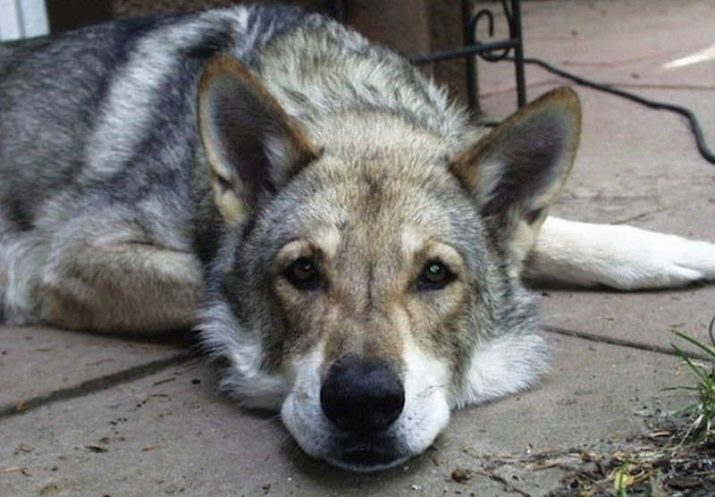
Advantages and disadvantages
The beauty of this breed conquered many people. To become a wolf, an independent character, a piercing attentive look of a forest beast - all this together makes a powerful impression. The gait of this dog is also fascinating, because she also moves like a wolf. Many want to get such a dog because of its unusualness and brutality, because such a purchase can effectively complement the image of a respectable person.

However, with all the advantages, dog handlers insist that this animal is not for everyone. Before you look for a suitable kennel specializing in this breed, you need to really carefully study all the features of the Sarlos wolf dog and understand its essence. You can only raise it if you have experience in dog breeding - This dog is not recommended for beginners.
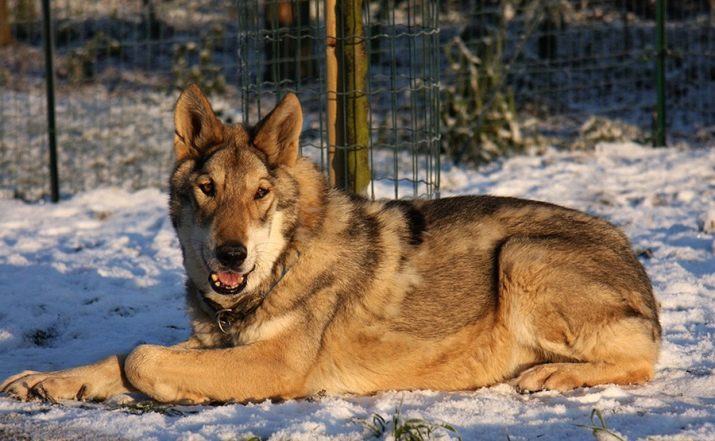
And, like any breed that is not easy to handle, it requires a great deal of patience and a lot of free time from the owner for upbringing and training.
Character Features
Due to natural independence, these dogs are able to make independent and correct decisions without waiting for the command of their owner. In unfamiliar surroundings, the Sarlos easily find a safe road. They are able to help in difficult situations, therefore they make good rescuers, as well as guides for people with disabilities.
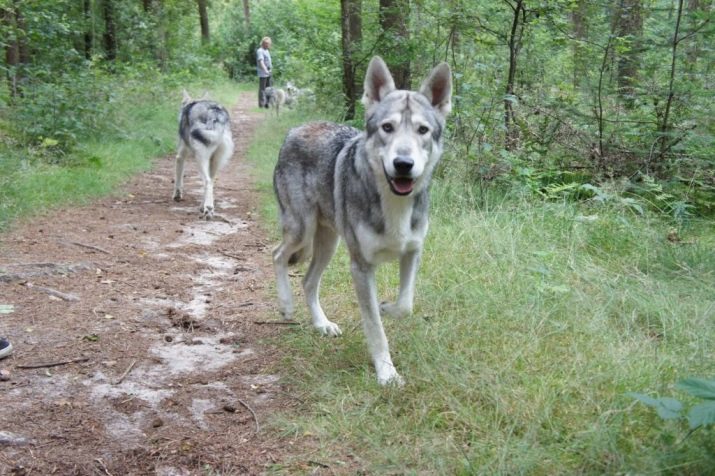
For all their boundless devotion to the owner, they are in no hurry to show their emotions, so you should not expect puppy delight from them at the sight of the owner. Usually they do not squeal or jump, even after meeting their owner after a long separation, but this behavior is quite suitable for many, since behaving with dignity is quite a match for this breed.
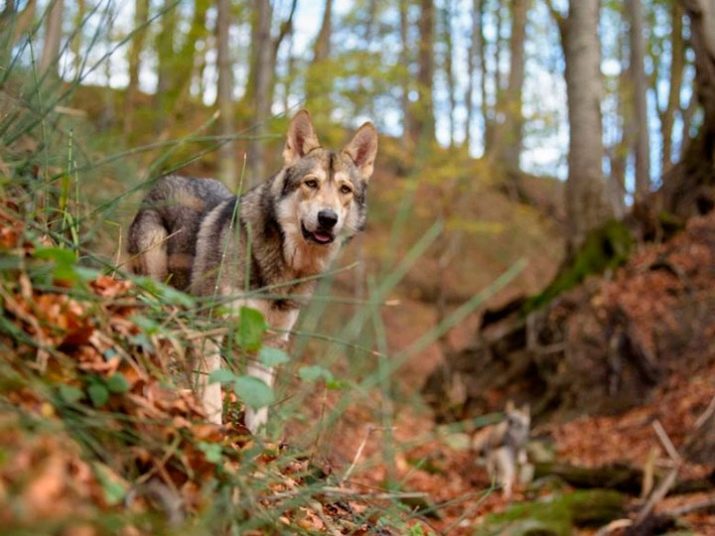
Do not be afraid of its "wild" origin - in the literature there are no recorded cases of causeless attacks by the Sarlos wolf on people. That is, she never shows aggression towards a person just because she did not like him or frightened her with her unbalanced behavior. If someone did not like this dog, he will just try to stay away from him and be alert.
It is curious that the first hybrids possessed less developed intelligence than the subsequent ones. This is due to the fact that during the selection more shepherd genes were mixed with the breed, and the dogs themselves, selected for breeding work, were the best.
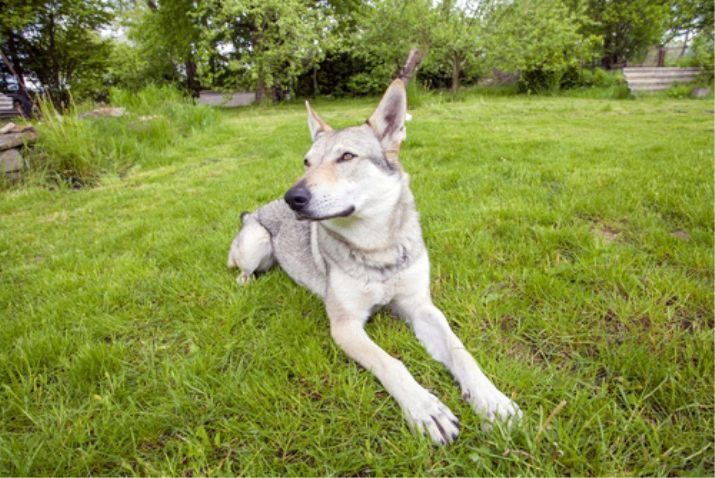
As a hunter, the dog uses both scent and sharp eyesight. He is fit to work in a pack. This animal can bark like other dogs, but most often it emits a howl typical of wolves.
Content Rules
Sarlos Wolf Dog, like no other breed, needs good workloads. Living in an apartment will be very uncomfortable for her, as this greatly limits her space. The optimal conditions for keeping a dog would be a house or aviary in a large adjoining territory. It is sometimes not forbidden to launch a four-legged friend into the house, but he must know that the main place of residence is outside. Sitting on a chain for the dog of Sarlos is a difficult test, which is not surprising, given its wild origin.
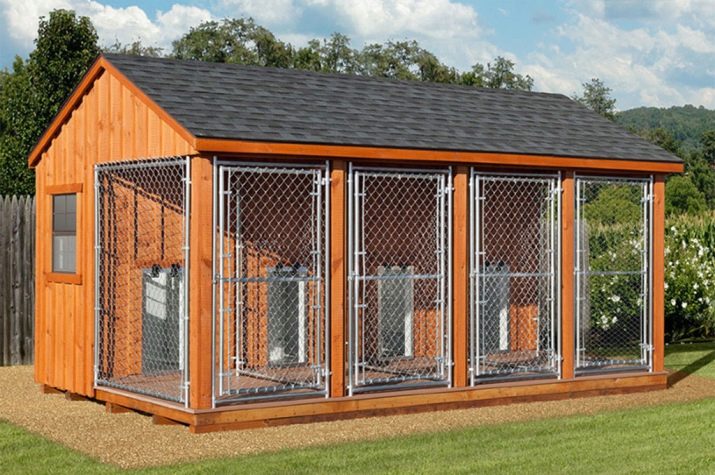
With the constraint of her movements, she begins to literally go crazy, behave inappropriately and constantly howl.
No matter how spacious your enclosure for your tailed friend is, he still needs frequent walks. Dogs live very well in the company of their own kind of individuals - this allows them to constantly communicate with other members of the "pack", to develop more harmoniously and socialize. They should be taken from childhood to places where life is in full swing so that they as soon as possible get the skills of life in society.
In the absence of interaction with the outside world, they can begin to run wild. Usually these dogs do not like to travel in transport, and they feel extremely uncomfortable in it, sometimes they have to be immersed in light anesthesia to transport them.
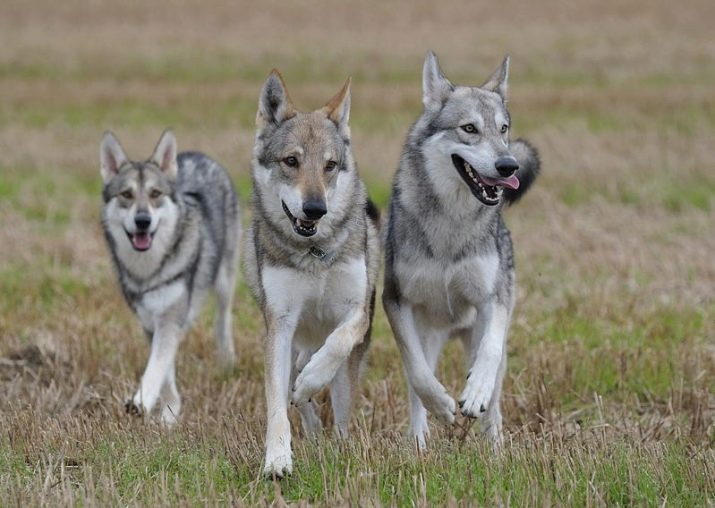
The mating season of this breed also has its own characteristics. So, the female of the Sarlos wolf is able to mate only once a year, and males during a riot of hormones can not sit on the site and break into the wild in all possible ways: dig the ground under the fence, jump over high fences. Their freedom-loving disposition is fully manifested, therefore, it is simply impossible to prevent a dog intent on finding a female.

An interesting fact is that they do not like all the females, and it is impossible to guess which one will be liked by the “groom”.
What to feed?
As for taste preferences, this dog is not particularly picky. A pet eats any dog food, and the owner’s task is only to have enough protein food in his pet’s diet. Meat can be varied and not the most dietary. Note that for puppies, you need to boil it a little - only with age do they have enough opportunities to digest a raw product. Porridge in the form of buckwheat, oatmeal or rice will not only reduce the cost of the diet, but also give the dog the necessary supply of protein.

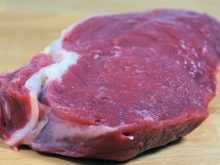

Like most dogs, it is very useful for Sarlos to eat vegetables and dairy products, but it occupies only a small part of the daily menu, and they love it less. Periodic eating of fish is not excluded. Do not forget to add fresh water to your pet's bowl in a timely manner, especially in the summer season.



By the way, she should stand at the level of his chest, and not on the floor itself.
How to care?
Twice a year, dogs of this breed molt. To facilitate this process for your pet and to protect the house from contamination with hair, comb the dog daily. Such periods do not last long, and at the end of them you can again do this procedure once a week or less. Shedding is a natural process for most animals, including a wolf dog.

She allows her to prepare for the new season and meet him in a suitable "fur coat".
The rest of the hygiene rules are similar to those that are presented for the maintenance of other dogs. You can even say that they are more modest than for many other breeds. Eyes and ears should be cleaned only if there is contamination. In winter, the dog should not be washed at all, because its warm fluff will dry slowly, which means it risks catching a cold, and a special substance is formed on the surface of the skin, which makes it easier for the dog to tolerate low temperatures.

Remember about regular treatments for parasites, which you need to do in the winter season.
Parenting and training
The peculiarity of this breed is that it is better to educate it collectively with other individuals, that is, "in a pack." However, the dog must accept the fact that sometimes it will remain alone. During the training, the animal is likely to show character, but it is impossible to break his will with physical punishment. It is better not to play with the dog's instincts, and fear is far from the best means of training. It is necessary to act according to the instructions of specialists, showing their authority without assault.
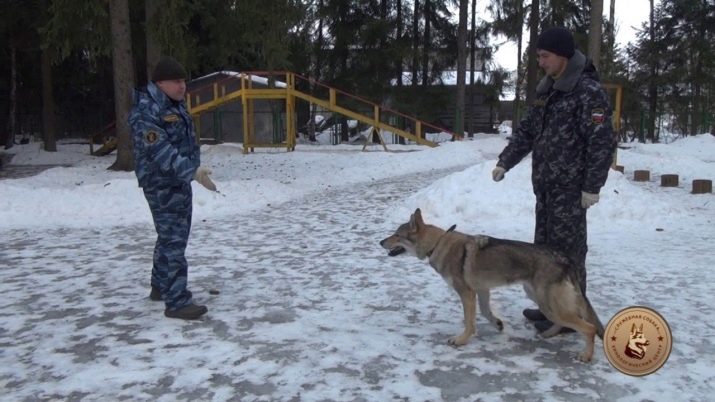
Then you can raise a worthy and intelligent dog, which will serve you faithfully, while genuinely loving and respecting its owner.
Perfectly, training should be interesting after all, empty repetition of commands will quickly bother your dog, and he will lose attention. As in any training, tasks should be regular, and even if their results are not immediately visible, a planned and properly organized work will certainly lead you to the goal.
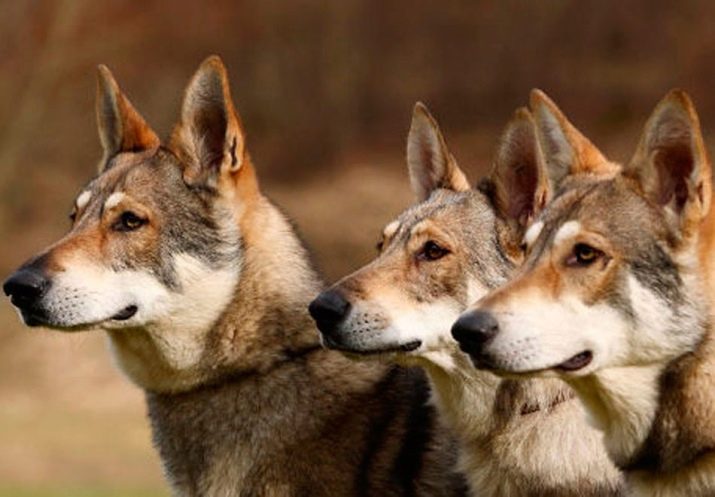
Health
Thanks to wolf immunity and health, representatives of this rare breed rarely suffer from ailments, and their life expectancy is quite large, and ranges from 15 to 20 years. There are no specific diseases in the genotype of these dogs. In case of ailments, be careful with antibiotics that are sometimes given to dogs. The use of drugs without control by a doctor can harm the animal, the same applies to other medicines. Vaccinations for the Sarlos wolf are just as important as for other dogs, therefore do not neglect vaccination.

Puppies cost
If the above nuances of the nature and content of this dog do not bother you, and you have sufficient experience with dogs, preferably service breeds, then this dog will be a valuable acquisition. As a rule, half-wolf puppies cost from 700 to 1,500 euros. Contact serious breeders who will not deceive you and sell a dog that just looks like a sarlos. As we have already noted, it is not so easy to find these animals in Russia.

Sarlos Wolf Dog is not suitable for everyone, if only because its content requires special conditions. This breed should be chosen only to those who can offer it accommodation in a spacious enclosure with a private house, as well as those who have experience in keeping a service dog and will be very patient in raising it. The loyalty of these animals makes them best friends who are modest in the manifestation of emotions, but are always ready to help their owner.
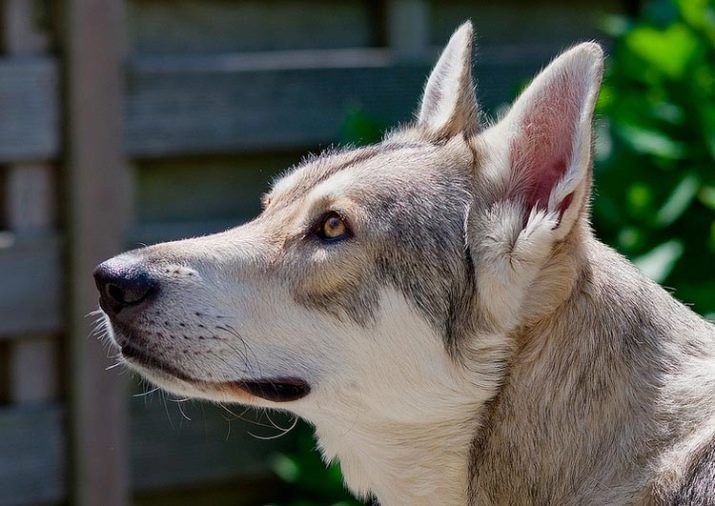
About the features of the breed, see below.
